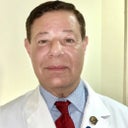Hello and thank you for your question! The "stretching" and "sagging" you're noticing is likely due to loss of elasticity. From age 30, our collagen and elastin production slows down, contributing to the skin aging. RF Microneedling and Laser Resurfacing are two popular treatments for improving age-related skin laxity and enlarged pores.




